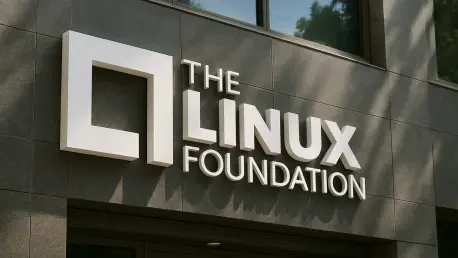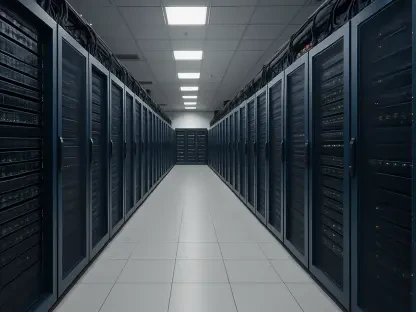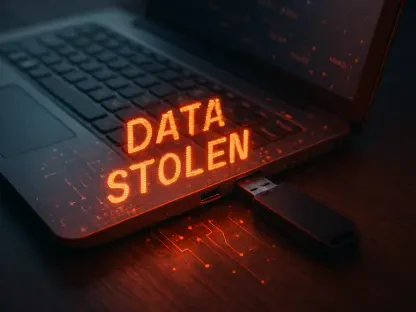In an era where technology shapes nearly every aspect of daily life, the words used within the industry carry significant weight, often reflecting deeper cultural and social implications that can influence workplace dynamics. A recent initiative by a Linux Foundation project has brought this issue into sharp focus, with the release of an updated Inclusive Language Guide aimed at reshaping how technical communities communicate. Spearheaded by the Academy Software Foundation (ASWF) and the Alliance for OpenUSD (AOUSD), this effort seeks to replace terms that may be perceived as offensive or exclusionary with more neutral and considerate alternatives. The move highlights a growing recognition that language in tech is not just a tool for coding or documentation but a critical component of fostering an environment where diverse individuals feel respected and valued. This development marks a pivotal step in aligning technical discourse with broader societal values of equity and sensitivity.
Redefining Problematic Terminology
The core of the updated guide lies in its detailed examination of specific tech terms that carry unintended negative connotations, pushing for replacements that prioritize neutrality. Terms like “Sanity Check,” often used to describe a basic test or review, are flagged for their potential insensitivity toward mental health concerns, with alternatives such as “validation check” or “consistency check” proposed instead. Similarly, the term “Hung,” typically applied to describe a stalled application, is discouraged due to its violent undertones, with suggestions like “stalled” or “unresponsive” offered as substitutes. Other examples include swapping “Dummy” for “Placeholder” or “Stub,” and avoiding culturally appropriated terms like “Pow-Wow” in favor of “meeting” or “huddle.” The guide also addresses language with gender assumptions or color-based implications, urging the replacement of terms like “blacklist,” “whitelist,” and “middleman” to prevent reinforcing harmful stereotypes. This meticulous approach underscores a commitment to minimizing discomfort through thoughtful word choices.
Beyond individual terms, the initiative reflects a broader intent to reshape the linguistic landscape of tech by addressing systemic biases embedded in everyday jargon. The guide’s recommendations are not merely about avoiding offense but about creating a shared vocabulary that aligns with modern principles of respect and inclusion. For instance, terms that imply exclusion or perpetuate outdated norms are systematically challenged, encouraging professionals to rethink how language shapes perceptions in collaborative spaces. This effort also acknowledges the diversity of experiences within tech communities, recognizing that what may seem harmless to some could be deeply unsettling to others. By providing clear alternatives and explanations for each change, the guide serves as both a practical tool and an educational resource, fostering greater awareness of how seemingly small linguistic shifts can contribute to a more welcoming industry culture. The focus remains on actionable change rather than abstract ideals.
Industry-Wide Movement Toward Inclusivity
The push for inclusive language extends beyond the efforts of ASWF and AOUSD, reflecting a wider trend among tech organizations to reevaluate communication practices. Major players like Google have adopted similar guidelines, signaling a collective acknowledgment that language plays a pivotal role in shaping workplace environments and individual experiences. This growing consensus highlights an understanding that even terms perceived as innocuous by some can impact comfort and belonging for others. The movement is not without its skeptics, with some viewing the changes as overly cautious or unnecessary, yet the overarching narrative emphasizes the value of prioritizing empathy over convenience. This trend illustrates a cautious but meaningful adaptation, where the industry grapples with balancing tradition and progress, ultimately aiming to create spaces where diverse voices are not just heard but actively supported through intentional communication.
Implementing these language changes across vast projects and repositories presents significant challenges, requiring coordinated efforts and buy-in from entire teams. The ASWF advises that when uncertainty arises around specific terms, asking questions and seeking clarification is a vital step toward ensuring sensitivity. This approach fosters a culture of dialogue rather than rigid enforcement, recognizing that inclusivity in language is an ongoing process rather than a one-time fix. It also acknowledges the practical hurdles of updating documentation, code comments, and training materials to reflect new standards, a task that demands both time and commitment. Despite these obstacles, the emphasis remains on the long-term benefits of such changes, as they contribute to building trust and respect within technical communities. The narrative here is one of patience and persistence, understanding that meaningful shifts in language require sustained effort and open-mindedness from all stakeholders.
Reflecting on a Shift Toward Equity
Looking back, the release of the updated Inclusive Language Guide by the Linux Foundation project stood as a defining moment in the tech industry’s journey toward greater equity. It addressed specific linguistic challenges with practical solutions, offering a roadmap for replacing problematic terms with inclusive alternatives. The collaborative efforts of ASWF and AOUSD, alongside broader industry trends, demonstrated a shared commitment to fostering environments where language no longer perpetuated discomfort or exclusion. Moving forward, the focus should remain on continuous education and dialogue, ensuring that teams are equipped to navigate these changes with clarity and purpose. Encouraging ongoing conversations about language use, coupled with accessible resources, will be key to sustaining this momentum. Ultimately, the path ahead lies in embracing adaptability, viewing language as a dynamic tool that can evolve to reflect the values of respect and inclusion that define a truly diverse tech landscape.









